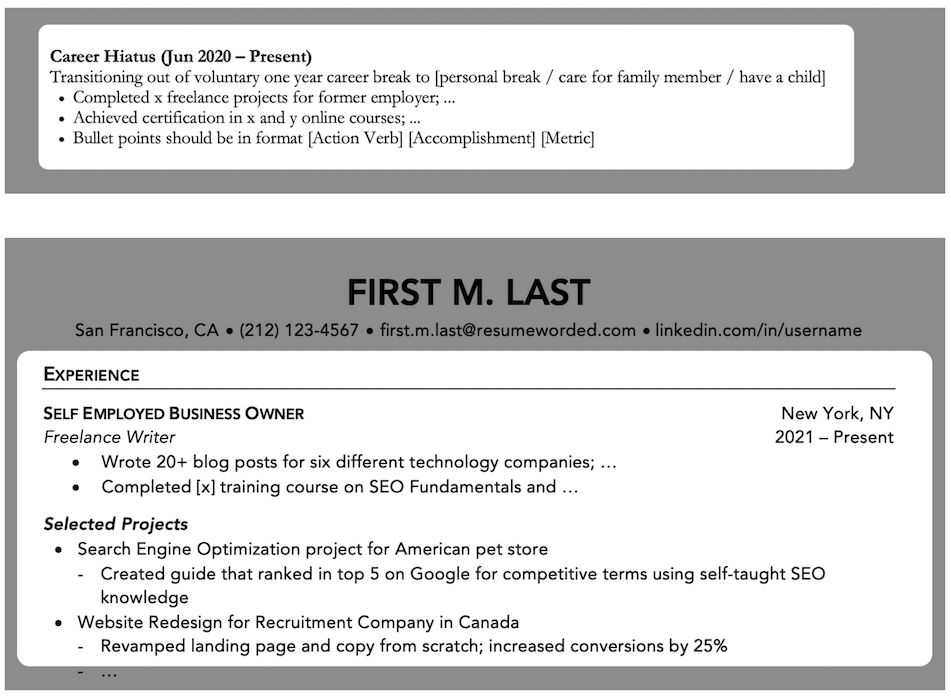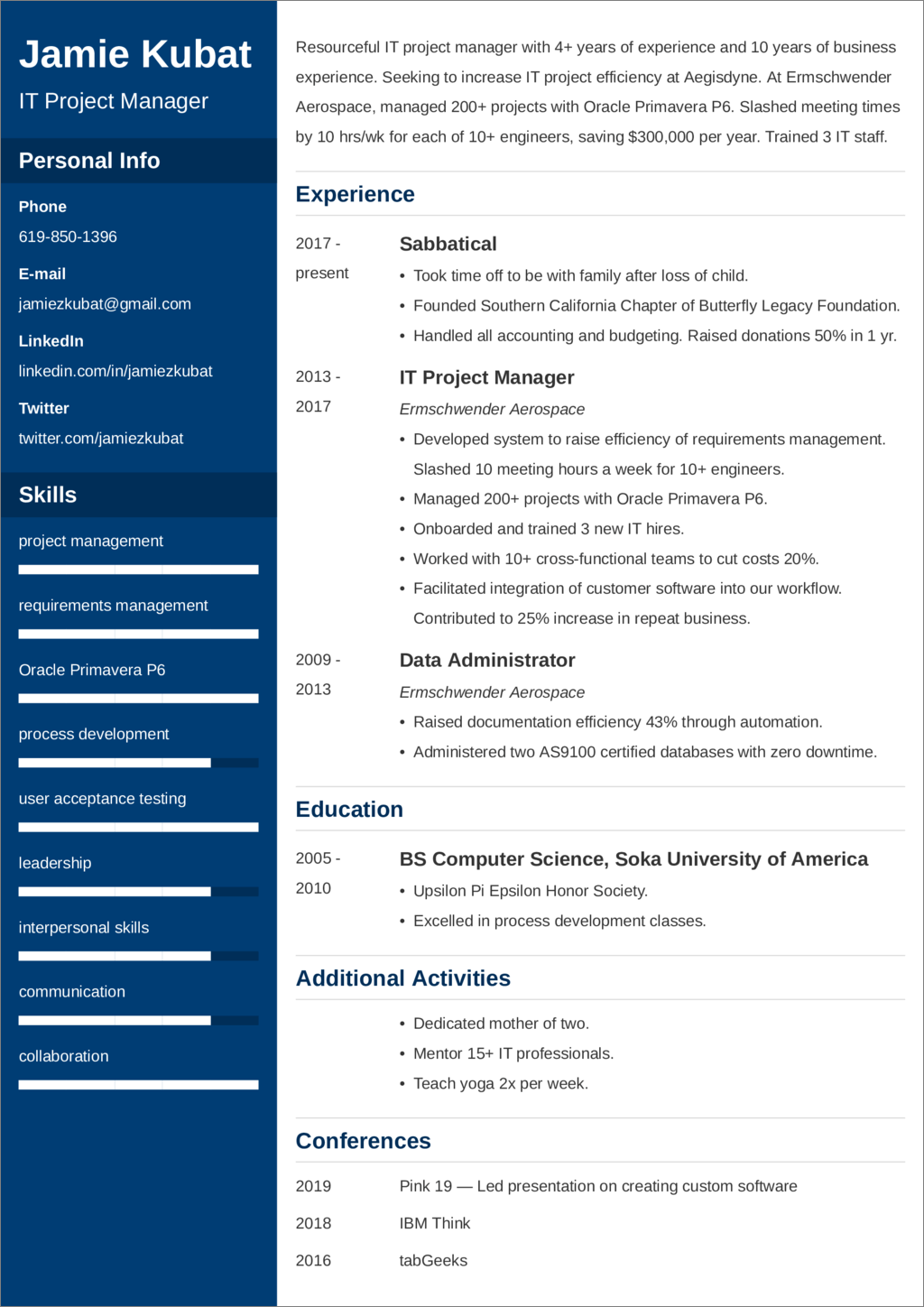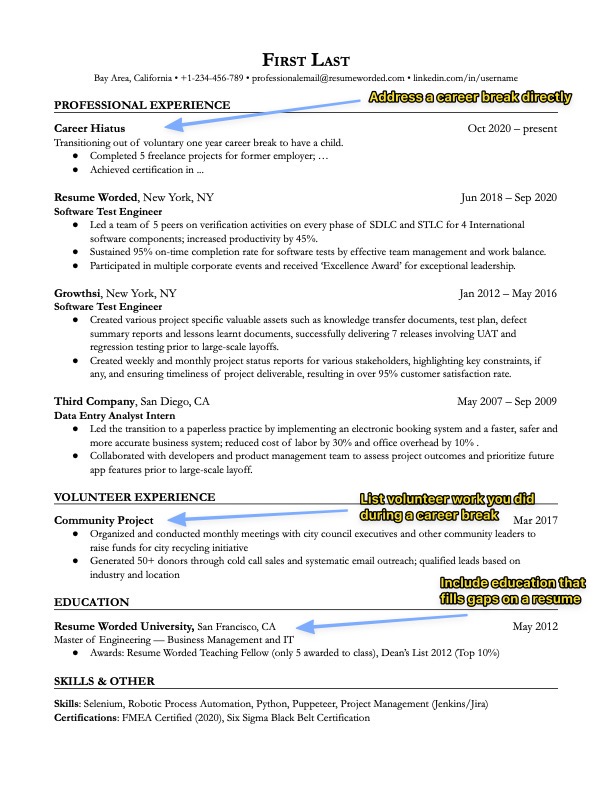How To Address Employment Gaps In A Canadian Resume?
Are you worried about how to address employment gaps in your Canadian resume? It is natural to feel concerned about how potential employers may view gaps in your work history. However, with the right approach, you can effectively communicate your skills and experiences, even if you have had periods of unemployment. In this article, we will explore some strategies to help you address employment gaps on your Canadian resume and increase your chances of landing your dream job. So, let’s dive in and discover how to handle this common challenge in the job search process.

Understanding Employment Gaps in a Canadian Resume
In today’s job market, it is not uncommon to encounter employment gaps on a resume. Understanding what employment gaps are and their potential impact on a Canadian resume is crucial for job seekers. This article aims to delve into the definition of employment gaps, common causes in the Canadian context, and the impact these gaps can have on resumes.
Definition of Employment Gaps
Employment gaps refer to periods of time during which a job seeker is not engaged in consistent employment. These gaps can range from a few months to several years. Whether deliberate or due to circumstances beyond one’s control, employment gaps are a significant aspect that warrants attention on a resume. They can be perceived by employers as potential red flags, raising questions about a candidate’s professional reliability and competence.
Common Causes of Employment Gaps in Canada
There are various reasons why individuals may experience employment gaps in Canada. Some common causes include:
- Layoffs or company downsizing: During times of economic uncertainty, Canadian workers may face layoffs as businesses restructure or downsize. In such cases, job seekers might have difficulty finding new employment opportunities, resulting in employment gaps.
- Personal health issues: Illness or injury, whether temporary or chronic, can require individuals to take time off work for medical treatment or recovery. These health-related employment gaps can be challenging to navigate when seeking new job opportunities.
- Pursuing higher education: Many individuals choose to further their education to enhance their skills and career prospects. Pursuing a degree or diploma program often requires dedicating a significant time period to full-time studies, resulting in an employment gap.
- Caregiving responsibilities: Many Canadians face the responsibility of caring for children, elderly parents, or family members with special needs. This can lead to gaps in employment as individuals prioritize their caregiving commitments.
- Unemployment due to economic downturn: Similarly to layoffs, economic downturns can lead to job losses and difficulty finding new employment. During economic recessions, many Canadians may experience prolonged periods of unemployment.
- Travel or sabbatical: Some individuals choose to take time off work to travel or embark on personal sabbaticals to explore new opportunities or passions. While fulfilling on a personal level, these experiences can create gaps in employment history.
- Work-related training or certification: Job seekers may take time off work to undergo training programs or acquire certifications related to their industry. While these activities contribute to professional growth, they can result in temporary employment gaps.
- Career change or transition: Individuals looking to pursue a different career path often face employment gaps as they navigate through career transitions, including gaining new skills and experiences.
Impact of Employment Gaps on Canadian Resumes
Employment gaps can have varying impacts on Canadian resumes, depending on how they are addressed and mitigated. It is important to understand that employers may view employment gaps skeptically, potentially impacting a candidate’s chances of securing an interview or job offer. However, with the right strategies and emphasis on relevant skills and experiences, job seekers can effectively minimize the negative impact of employment gaps.
Overcoming Employment Gaps
When faced with employment gaps, there are several strategies that job seekers can utilize to present their resumes in the best possible light. These strategies include highlighting relevant skills and accomplishments, showcasing transferable skills, emphasizing continuous learning and professional development, explaining the reason for the employment gap, engaging in volunteering and freelancing, updating references, and leveraging networking opportunities.
Highlighting Relevant Skills and Accomplishments
One of the most effective ways to overcome employment gaps is to highlight relevant skills and accomplishments that are transferrable to the desired role. Job seekers should focus on presenting a comprehensive skills section that clearly demonstrates their expertise and competencies. By aligning these skills with the requirements of the job, individuals can showcase their suitability for the position, regardless of any employment gaps.
Moreover, job seekers should emphasize their accomplishments, demonstrating their ability to deliver results and contribute value to past employers. By quantifying achievements and highlighting their impact, individuals can attract employer attention and showcase their potential as strong candidates for the desired role.
Showcasing Transferable Skills
Transferable skills are those that can be applied across different roles and industries. When faced with employment gaps, it is crucial to showcase these transferable skills on a resume to demonstrate versatility and adaptability. Examples of transferable skills include problem-solving, communication, leadership, teamwork, and organization.
To effectively showcase transferable skills, job seekers should provide concrete examples of how they have used these skills in past experiences. This can include highlighting relevant projects, volunteer work, or even personal endeavors. By demonstrating the applicability of these transferable skills, individuals can create a compelling case for their potential as valuable assets to prospective employers.
Emphasizing Continuous Learning and Professional Development
Employment gaps can be effectively addressed by emphasizing continuous learning and professional development activities during these periods. Job seekers should utilize their time away from traditional employment to enhance their skills and knowledge in their respective fields. This can include participating in online courses, attending industry conferences or workshops, or even pursuing certifications.
By showcasing these continuous learning efforts on their resumes, individuals demonstrate their commitment to professional growth and staying up-to-date with industry trends. This can make a significant impact on employers, highlighting the proactive approach individuals take to develop their skills, even during employment gaps.
Explaining Reason for Employment Gap
In some cases, it may be appropriate to explain the reason for an employment gap directly on the resume. This can help address potential concerns or questions that employers may have. When explaining the employment gap, it is essential to keep the explanation concise, neutral, and focused on the professional growth and development gained during that period.
For example, if an individual took time off to care for an elderly family member, they can mention their caregiver responsibilities while highlighting any transferable skills or personal learning experiences gained from that period. By effectively framing the reason for the employment gap, individuals can present an honest and positive narrative to employers.
Volunteering and Freelancing
Engaging in voluntary or freelance work is an excellent way to gain relevant experience and bridge employment gaps. Job seekers can strategically seek out opportunities to contribute to organizations or projects that align with their career goals. By volunteering or freelancing, individuals can continue building skills, expanding professional networks, and demonstrating their commitment to their chosen field.
When presenting voluntary or freelance work on a resume, job seekers should treat these experiences as professional endeavors. This includes clearly outlining responsibilities, achievements, and the impact of their contributions. By showcasing the relevancy and impact of these experiences, individuals can present a well-rounded professional profile that minimizes the focus on employment gaps.
Updating References
During periods of employment gaps, it is crucial to update and cultivate references that can vouch for a job seeker’s skills and qualifications. This can include reaching out to past supervisors, colleagues, or mentors who can speak to the candidate’s abilities and work ethic.
Job seekers should also consider seeking references specifically for any voluntary or freelance work they have undertaken during their employment gaps. References from these experiences can provide valuable insights into an individual’s dedication, reliability, and adaptability.
Networking and Professional Associations
Networking is of paramount importance when addressing employment gaps. Job seekers should actively engage in networking activities and leverage professional associations to connect with individuals in their desired industry. Networking can provide valuable opportunities for professional growth, learning, and potential job leads.
Joining professional associations related to the desired field allows job seekers to meet industry professionals, stay updated on trends, and gain access to valuable resources. Regularly attending networking events can also enhance visibility and create opportunities for building meaningful connections with potential employers or colleagues.
In addition to in-person networking events, job seekers should also leverage social media platforms such as LinkedIn to expand their professional networks. Active engagement on these platforms can open doors to new connections, informational interviews, and potential job opportunities.

Tailoring the Resume to Minimize Employment Gaps
The format of a resume plays a crucial role in minimizing the visibility of employment gaps. By tailoring the resume to showcase relevant experiences and skills, job seekers can draw attention away from the gaps and onto their qualifications. There are three common resume formats that individuals can utilize to achieve this: the reverse chronological format, the functional format, and the combination format.
Reverse Chronological Format
The reverse chronological format is the most widely used resume format and is particularly effective when there are no long gaps in employment. This format focuses on presenting a job seeker’s work experience in reverse chronological order, starting with the most recent position.
For individuals with employment gaps, it is still possible to utilize the reverse chronological format by placing the emphasis on relevant experiences and achievements rather than the employment timeline. By clearly highlighting skills gained and accomplishments during employment, individuals draw attention to their value as candidates and minimize the focus on any gaps in employment.
Functional Resume Format
The functional resume format is ideal for job seekers with significant employment gaps or those transitioning between industries. This format places the focus on skills and accomplishments rather than the chronological order of employment.
When using the functional format, individuals should create sections that highlight specific skills or areas of expertise. This allows job seekers to showcase their abilities and achievements in a way that is most relevant to the desired position.
While the functional format is useful for minimizing employment gaps, it is essential to include a brief employment history section after the skills and accomplishments section. This shows employers the candidate’s work history while still placing emphasis on their skills and qualifications.
Combination Resume Format
The combination resume format offers a balance between the reverse chronological format and the functional format. It allows job seekers to highlight both their skills and work experience.
When using the combination format, individuals should begin with a powerful summary or qualifications section, highlighting their key skills and accomplishments. This is followed by a reverse chronological listing of work experience, focusing on relevant roles and achievements.
The combination format is effective for job seekers with moderate employment gaps. It allows them to showcase their skills and abilities while also providing a clear timeline of their employment history.
Addressing Specific Employment Gaps
Job seekers may encounter various specific reasons for employment gaps, each requiring a unique approach to address on a resume. It is crucial to tailor the resume to effectively address these situations and present a comprehensive professional profile.
Maternity or Paternity Leave
For individuals who have taken time off for maternity or paternity leave, it is essential to include relevant skills gained during this period. This can include highlighting time management, multitasking, problem-solving, and communication skills developed through parenthood.
Additionally, any volunteer work or continuing education undertaken during this period should also be showcased, as it demonstrates a proactive approach to professional growth.
Personal Health Issues
When addressing employment gaps due to personal health issues, job seekers should focus on the skills and experiences gained during the recovery process. This can include highlighting resilience, determination, adaptability, and self-management.
Moreover, job seekers may consider explaining their health-related employment gap briefly in a cover letter or during an interview, emphasizing their commitment to their health and readiness to re-enter the workforce.
Pursuing Higher Education
Individuals who have taken time off to pursue higher education should focus on presenting their educational achievements and the skills acquired during their academic pursuits. Job seekers can include any relevant coursework, research, or projects undertaken during their time as students.
Furthermore, individuals should highlight any leadership roles, community involvement, or extracurricular activities that showcase their ability to balance academic demands with additional responsibilities. This demonstrates their commitment to personal growth and development, even during employment gaps.
Caregiving Responsibilities
Job seekers with employment gaps due to caregiving responsibilities should highlight the transferable skills developed through these experiences. This can include showcasing problem-solving, time management, organization, and empathy.
Additionally, job seekers may consider engaging in volunteer or freelance work related to their caregiving responsibilities to bridge the employment gap and gain relevant experience. Including these experiences on the resume allows individuals to demonstrate their dedication and continued professional growth during their caregiving period.
Unemployment Due to Economic Downturn
When addressing employment gaps resulting from economic downturns, individuals should focus on showcasing any relevant skills gained during the downtime. This can include industries-specific skills developed through self-study, online courses, or work-related training.
Highlighting volunteer work or freelance projects undertaken during this period can also demonstrate a proactive approach to maintaining professional growth and dedication to the chosen field. By emphasizing these experiences, individuals can minimize the focus on the employment gap and highlight their continued commitment to their profession.
Travel or Sabbatical
Including travel or sabbatical experiences on a resume can be tricky, as they may not always relate to the desired role. However, job seekers should focus on highlighting any transferable skills gained during these experiences, such as adaptability, communication, problem-solving, or cultural awareness.
Moreover, individuals should consider including any volunteer work, language courses, or cultural immersion programs undertaken during their travels or sabbatical. This showcases their commitment to continuous learning and their ability to make productive use of their time away from traditional employment.
Work-Related Training or Certification
When addressing employment gaps resulting from work-related training or certification programs, job seekers should prioritize showcasing these achievements on their resume. These programs demonstrate dedication to professional growth and the acquisition of industry-specific skills.
Additionally, individuals should strive to include any practical applications or projects completed during the training or certification program. This demonstrates the practical application of the skills gained and can be viewed as valuable experience by potential employers.
Career Change or Transition
Individuals transitioning between careers should focus on highlighting the transferable skills they bring from their previous roles to the desired position. Job seekers should draw connections between the skills acquired in their previous industry and the requirements of the new field.
Furthermore, individuals should include any volunteer work, internships, or part-time roles undertaken during the transition period. This demonstrates a proactive approach to gaining relevant experience, solidifying their commitment to the new career path.

Strategies to Explain Employment Gaps
Apart from tailoring the resume format and content, job seekers should consider using various strategies to address employment gaps. These strategies include stating the employment gap directly on the resume, utilizing a cover letter, and addressing gaps during job interviews.
Stating Employment Gap in the Resume
In cases where the employment gap is relatively short or easily explained, job seekers may choose to address it directly on the resume. This can be done by specifying the dates of the employment gap and providing a brief explanation.
For example, an individual may state “Family Caregiver Gap: 2017-2018” and follow it with a one-sentence explanation such as “Took time off to care for an ill family member, gaining valuable experience in providing emotional support and coordinating medical treatments.” This allows employers to see the gap upfront, minimizes uncertainty, and creates an opportunity to showcase acquired skills during that period.
Using a Cover Letter
A cover letter is an ideal place to provide a more comprehensive explanation of an employment gap. Job seekers can use this opportunity to explain the reason for the gap, describe any relevant experiences during that period, and highlight skills gained.
By addressing the employment gap in a cover letter, individuals can provide context and create a more compelling narrative that showcases their suitability for the desired role. Additionally, it demonstrates transparency and helps to manage potential concerns or questions that employers may have.
Addressing Gaps in the Job Interview
Inevitably, job seekers will face questions about employment gaps during job interviews. It is essential to be prepared to address these questions confidently and transparently.
When discussing employment gaps in a job interview, individuals should focus on framing the gap in a positive light, highlighting any personal or professional development achieved during that period. It is important to emphasize how the gap contributed to personal growth, learning, and acquiring transferable skills that are relevant to the desired role.
By effectively managing the discussion around employment gaps, job seekers can demonstrate their readiness to re-engage in the workforce and their commitment to continuous improvement and growth.
Showcasing Relevant Experience during Gaps
Volunteer work, freelance or contract work, side projects, and professional development courses or certifications are valuable ways to gain relevant experience and bridge employment gaps. Job seekers should leverage these opportunities to strengthen their resumes and display their dedication to their chosen field.
Volunteer Work
Volunteer work can provide individuals with valuable experience and skills development, even without traditional employment. Job seekers should include any volunteer roles they have undertaken during employment gaps and emphasize the skills and responsibilities involved.
When presenting volunteer work on a resume, individuals should highlight any leadership roles, achievements, or impact made through their contributions. This helps to portray the volunteer experience as invaluable and relevant to the desired role.
Freelance or Contract Work
Engaging in freelance or contract work can be an effective way to gain hands-on experience and bridge employment gaps. Job seekers should treat freelance or contract work as professional engagements by highlighting responsibilities, clients, and accomplishments.
By showcasing the range of clients and projects undertaken during employment gaps, individuals can establish their professional credibility and make the most out of the experience. Freelance work also demonstrates initiative, self-motivation, and adaptability—qualities highly regarded by employers.
Side Projects and Personal Endeavors
Job seekers should not discount the value of side projects and personal endeavors when presenting their professional profiles. These projects can provide an opportunity to showcase one’s creativity, problem-solving skills, and ability to execute ideas.
Whether it is a personal blog, developing a website, or undertaking a personal research project, these experiences can be presented on a resume as relevant experience. Individuals should emphasize the skills gained, outcomes achieved, and the impact these projects had in their chosen field.
Professional Development Courses or Certifications
Engaging in professional development courses or acquiring certifications during employment gaps is a proactive way to enhance skills and knowledge. Job seekers should include these courses or certifications on their resumes, focusing on the relevant skills and competencies gained.
Individuals should provide details about the courses, such as the program’s name, institution, and dates of completion. They can also highlight any individual or group projects undertaken as part of the courses, demonstrating practical application of the acquired knowledge.

Leveraging References and Recommendations
References and recommendations play a vital role in reinforcing a job seeker’s qualifications and abilities. By leveraging references effectively, individuals can mitigate the impact of employment gaps and further strengthen their professional profiles.
Requesting References from Relevant Experiences
Job seekers should request references from relevant experiences during employment gaps. This can include supervisors, colleagues, or mentors from volunteer work, freelance projects, personal endeavors, or professional development activities.
When requesting references, individuals should provide sufficient information about their role, responsibilities, accomplishments, and the potential positive impact their references can make. This allows the referee to provide a comprehensive endorsement that highlights the job seeker’s suitability for future positions.
Seeking Recommendations for Volunteer or Freelance Work
Recommendations specifically for volunteer or freelance work can provide job seekers with additional credibility and validation of their skills and work ethic. Individuals should reach out to supervisors or clients from these experiences and request recommendations that emphasize the application of their skills, accomplishments, and professionalism.
By including these recommendations on their resumes or online profiles, individuals can reveal the high regard in which others hold their work. This adds further weight to their professional credentials and can help mitigate any concerns around employment gaps.
Utilizing Online Platforms for Professional Endorsements
Online platforms such as LinkedIn offer an excellent opportunity to gather professional endorsements and recommendations. Job seekers should actively seek endorsements from colleagues, supervisors, or clients they worked with during employment gaps.
Endorsements on platforms like LinkedIn provide visible confirmation of an individual’s skills and abilities. This helps hiring managers gain additional insights into a candidate’s qualifications, beyond what is presented on their resume or traditional references.
Importance of Networking
Networking is an essential aspect of any job search, particularly when addressing employment gaps. Engaging with professional associations, attending networking events, and leveraging social media platforms can significantly enhance job search outcomes.
Joining Professional Associations
Professional associations are an invaluable resource for job seekers looking to minimize the impact of employment gaps. These associations provide opportunities to connect with industry professionals, stay updated on industry trends, access job postings, and attend industry-specific events.
By joining professional associations relevant to their field, individuals can leverage these connections to gain insights, build relationships, and potentially secure job opportunities. Engaging actively in association activities can help bridge the gap in employment history and showcase ongoing industry involvement.
Attending Networking Events
Regularly attending networking events allows job seekers to meet other professionals in their field, learn about industry trends, and establish meaningful connections. These events can include industry conferences, workshops, seminars, or informal gatherings.
Networking events provide individuals with opportunities to showcase their skills, knowledge, and enthusiasm for their chosen field. By actively participating in conversations, sharing insights, and exchanging contact information, individuals create networks that can be discreetly leveraged when addressing employment gaps.
Leveraging Social Media for Networking
Social media platforms, particularly LinkedIn, offer job seekers the ability to connect with professionals globally. Individuals should actively engage on these platforms, participate in relevant online communities, and share industry-related content.
By leveraging social media for networking, job seekers can expand their professional networks, gain visibility among industry peers, and access valuable career opportunities. Regular engagement on social media can also help individuals bridge employment gaps by showcasing their expertise, thought leadership, and ongoing professional growth.

Staying Positive and Confident
When addressing employment gaps, maintaining a positive attitude and projecting confidence are crucial. Job seekers should focus on presenting themselves as capable professionals who are ready to contribute their skills and abilities to their desired roles.
Focusing on Achievements and Success Stories
Rather than dwelling on the employment gap itself, job seekers should direct their focus towards their achievements and success stories in previous roles. By highlighting tangible outcomes, individual contributions, and positive feedback from past employers or clients, job seekers demonstrate their ability to drive results.
Additionally, job seekers should frame any challenges faced during the employment gap and share how they overcame them or leveraged the period to develop new skills and perspectives. By emphasizing their growth and accomplishments, individuals create a strong narrative that positions them as competitive candidates, despite any employment gaps.
Honesty and Transparency
When discussing employment gaps, it is essential to approach the topic with honesty and transparency. Job seekers should avoid attempting to hide or downplay the gap, as this can raise even more concerns for employers.
By openly discussing the reasons for the employment gap and addressing any potential concerns during the application or interview process, job seekers build trust and demonstrate integrity. This allows employers to focus on the job seeker’s abilities and qualifications, rather than fixating on the gap itself.
Maintaining a Positive Attitude
Job seekers should maintain a positive attitude throughout the job search process, regardless of employment gaps. Employers are attracted to candidates who display optimism, resilience, and a willingness to learn and grow.
By projecting positivity and enthusiasm, individuals create a favorable impression in the minds of employers. This positivity can help offset any concerns about employment gaps and emphasize the job seeker’s potential contributions to the organization.
Conclusion
Employment gaps on a Canadian resume can be a significant concern for job seekers. However, with the right strategies and a tailored approach, these gaps can be successfully addressed and minimized. By leveraging relevant skills and accomplishments, showcasing transferable skills, emphasizing continuous learning and professional development, explaining the reason for employment gaps, engaging in volunteering and freelancing, updating references, and maximizing networking opportunities, job seekers can effectively navigate and overcome employment gaps.
It is crucial for job seekers to tailor their resumes to minimize the visibility of employment gaps by utilizing the appropriate format, addressing specific gaps, showcasing relevant experiences gained during gaps, leveraging references and recommendations, emphasizing the importance of networking, and maintaining a positive and confident attitude. By applying these strategies, job seekers can successfully present themselves as qualified candidates, despite any employment gaps, and enhance their opportunities for career advancement in the Canadian job market.







